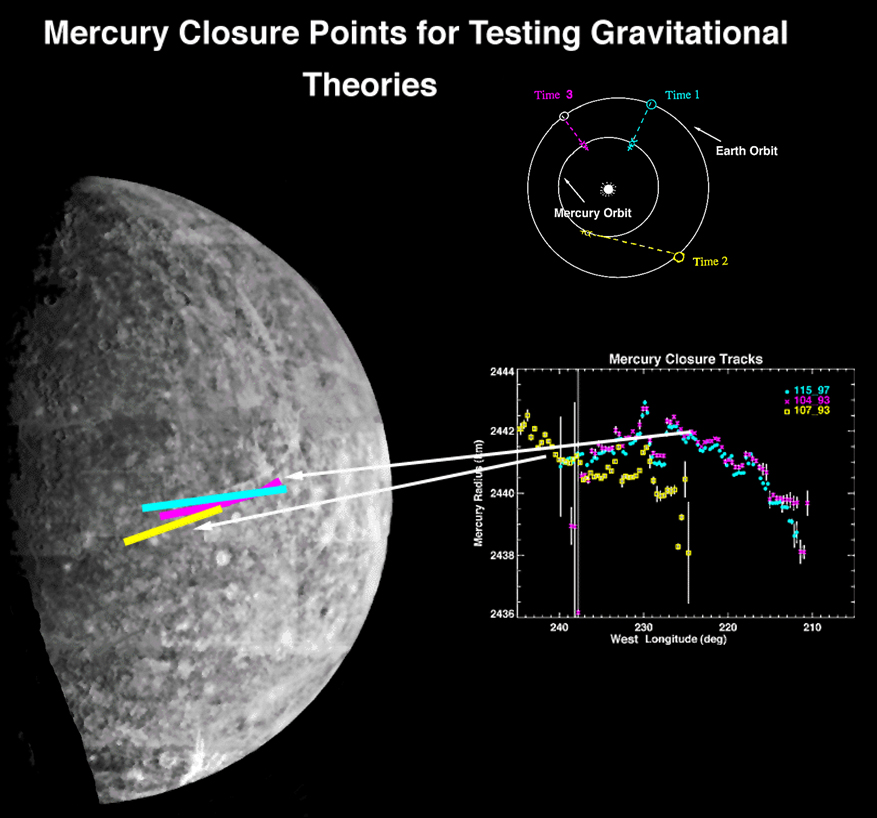
Monday, 07 October 2002
MERCURY CLOSURE POINTS FOR TESTING GRAVITATIONAL THEORIES

GSSR has a continuing program of radar observations of Mercury with the objectives of testing gravitational theories, of directly measuring the Sun's gravitational J2, and of searching for a variation of the gravitational constant with time. A direct measure of J2, compared with the solar oscillation value, would place limits on the models of the Sun's core. The method of this research is radar ranging observations of Mercury. The best of these measurements are high accuracy "closure" points in which the common topography is removed, leaving only orbital information. This proposal is for support of Goldstone observations, but this work is a joint effort with Arecibo Observatory. Joint observations are occasionally necessary for calibration. These radar observations are potentially of very high precision, since the observations are designed to produce "closure" points. "Closure" is achieved by observing the same subearth points (Mercury longitude and latitude) at different epochs (hence different orbital longitudes). The common topography differences out , thus removing this very large "noise" source (from the point of view of testing theories of gravity). See Figure 1 for a graphic example of a closure point.From radar observations of Mercury using DSS-14 and the 100-m GBT, we have been able to determine the spin pole orientation of Mercury to very high accuracy ( Margot at al., 2002, in preparation). This determination is important since planning for closure points requires an extremely good knowledge of the sub-radar (sub-Earth) point on Mercury.